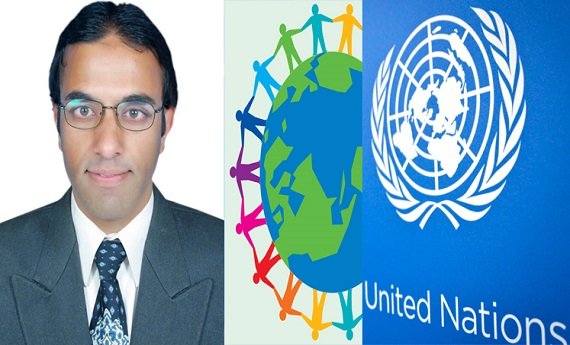SDGs: A ROADMAP FOR PEACEFUL, PROGRESSIVE AND PROSPEROUS WORLD – by: Wajid Saeed
Pakistan – Following the progress made under the Millennium Development Goals, which guided global development efforts in the years 2000-2015, United Nations member states adopted a set of 17 goals on 25 September, 2015 known as sustainable development goals or global goals for ending poverty, fighting inequality, and tackling climate change by 2030.
The sustainable development goals that were agreed by the members of the United Nations in September 2015 are designed to be universal. They apply to the whole world, to all peoples and all nations. In today’s globalized world, everything is interconnected, combating climate change, working towards gender equality, promoting good governance and the peaceful resolution of conflicts — these are all issues that touch on everyone’s lives. Since all adopted goals are relevant to everyone and have to be tackled on a global scale, every country is responsible for contributing to the achievement of the Sustainable Development Goals.
Comparative study on SDGs versus MDGs reveals that the MDGs was a set of goals to be applied to the world’s developing nations only, whereas in case of SDGs every country is considered a developing country. MDGs was an effort that is generally credited with yielding serious gains in areas such as child mortality and access to clean water by helping focus aid and government attention, despite of it the poorest and most vulnerable people are being left behind. The activities of MDGs were undertaken in a subset of countries, and thus faced alot of uncertainties in implementation and accountability like who was responsible for them to be realized: was its people and or the governments of the countries themselves or were they a global responsibility? In case of SDGs it was cleared all on the day of adoption that the responsibility for implementation rests with the leaders and governments of all nations, and the accountability rests with the nations themselves. It’s a collective responsibility and indeed all 193 nations of the world have themselves accepted this responsibility in a total way.
When it comes to accountability, good governance is a key to make it happen. Goal 16 of SDGs “Peace, Justice and Strong Institutions” is not only important in itself, but also as an absolute necessity to ensure the good governance that is required for the sustainable development goals to be realized. Hence, SDGs totally rely on the political process through which the decisions are made to ensure that the goals are achieved. Some of these decisions relate to the extent to which people can access the things that they need for life, like health, education or water. Some of the goals represent, what people need to be sure that their planet is sustainable. Some of the goals focus on ways and patterns of economic growth and prosperity that is spread among all the people. And one of the goals reflects the importance of having the rule of law and institutions that ensure justice, particularly when it comes to the resolution of conflict, resolution in ways that are non-violent.
So de facto, all the goals require that kind of institutional capacity for them to be properly implemented -– institutional capacity that permits non-violent management of conflict and encourages redistribution in favor of those who are most likely to be left behind. That’s why for many, Goal 16 is more important to ensure accountability and governance for whole set of global goals’ implementation, because it is understood that without good governance it’s extremely difficult to ensure that there is equitable access to the benefits that are available in our world and to ensure that wealth, income and prosperity are equitably distributed between women and men, among all people in society, between those that are able-bodied and those that are disabled and so that there is a fair and just access for all, whatever their circumstances.
The thinking behind the sustainable development goals was one that recognized the interconnectedness of all the aspects of people’s existence. It recognized that as well as requiring the basic needs of life, people also need to be able to access an environment that is safe and they can support their existence, that they also need to be protected against violence and any kind of upheaval that they need to work in partnership with others for their well-being.
Agenda for sustainable development goals will leave no one behind. They represent a long-term plan for people and the planet. They are reflecting some of the global imperatives for the future, not just of current generations, but of generations to come. The issues that are covered in, are issues experienced by all the countries: For example, climate action, oceans, sustainable consumption and production, women’s empowerment and gender equality goals are all relevant to everywhere. Hence, in the context of SDGs, every country is a developing one, and every country needs to contribute to these goals. If a single country does not take action on these common goals; climate change; or does not focus on the conditions of the oceans and seas, the consequences will be bad for everybody in the world.
Writer is peace activist and associated with Peace Mission; an INGO www.missionthepeace.org
